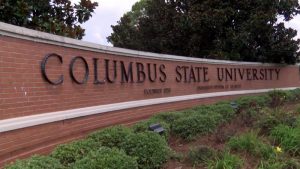Columbus State University (CSU) in Columbus, Ga., announced that it has made significant changes to its IT leadership by appointing both a new CIO and CISO. The university has appointed Theodore Laskaris as CIO and Nicol Lewis as CISO.
Alabama Gov. Kay Ivey signed state Senate Bill 193 that will allocate $280 million for this fiscal year from the state’s Advancement and Technology Fund to spend on improvements to classroom technology and infrastructure.
In a move to close the digital divide for both students and adults, the Miami-Dade (Fla.) Public Library System (MDPLS) launched a new Tablet Lending Program.
The Department of Education has launched an outreach campaign to alert K-12 and higher education students that they are eligible for a monthly discount on broadband internet service.
As part of its campuswide digital transformation efforts, Loyola University New Orleans is partnering with Ellucian, a higher education technology solutions provider.
National University, a California-based nonprofit that caters to adult learners, has turned to an AI-driven chatbot to help improve student retention.
The Federal Communications Commission (FCC) has adopted the final rules to implement the Emergency Connectivity Fund Program, which will help schools and libraries purchase the technology needed to close the homework gap.
Amid a school year marked by modernizing education technology to enable distance and hybrid learning, Arizona State University’s Thunderbird School of Global Management had a technology-driven graduation ceremony featuring commencement speeches delivered via hologram.
A New Mexico judge ordered the state to provide computers and high-speed internet access to “at-risk” students who lacked the resources needed to access remote learning both during and after the coronavirus pandemic.
Federal Communications Commission (FCC) Acting Chairwoman Jessica Rosenworcel on April 30 released a draft of a proposed order for the $7.17 billion Emergency Connectivity Fund, which would reimburse schools and libraries for their purchases of devices and broadband connections during the COVID-19 pandemic.










